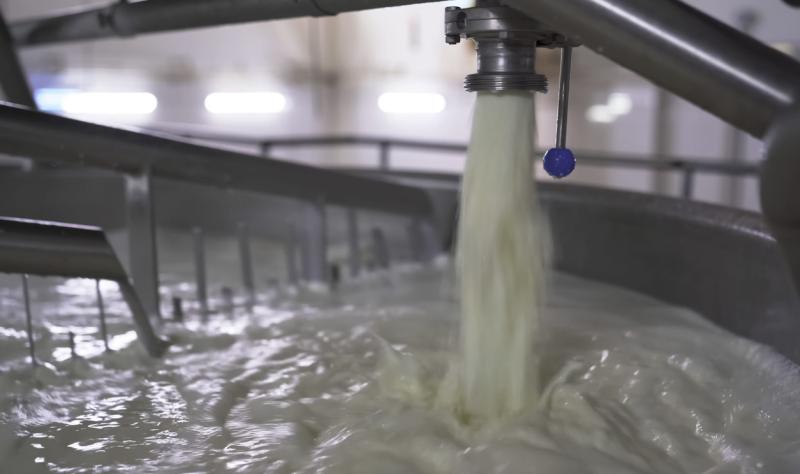Third avian flu spillover reported in Arizona dairy herd; raw pet food sickens Oregon cats – University of Minnesota Twin Cities

Olga Kostrova/iStockFor the second time in just over a week, national milk testing has identified another spillover of H5N1 avian influenza into dairy cows, with investigators linking detection to a herd in Arizona’s Maricopa County.In other developments, agriculture officials in Oregon and Washington warned pet owners about the risk of raw pet food after tests on sick domestic cats from different households in Multnomah County linked the infections to contaminated food from the same company.Also, against the backdrop of an ongoing surge of outbreaks in commercial poultry, the US Department of Agriculture (USDA) has conditionally approved an H5N2 avian flu vaccine made by Zoetis for use in poultry.Arizona officials announced on February 14 that the state’s agriculture department along with the USDA Animal and Plant Health Inspection Service (APHIS) have identified H5N1 in milk produced by a dairy herd in Maricopa County. Officials said the virus is the D1.1 genotype and that the cattle haven’t shown symptoms so far. The detections come on the heels of a similar detection through milk sampling in Nevada, which led to the detection of the virus in dairy herds in Churchill County. Clinical signs in those cows didn’t develop until after the detections. Shortly after, Nevada reported its first H5N1 infection in a human, a dairy worker who was exposed to the sick cows.D1.1, circulating widely in North American wild birds, has fueled a surge in poultry outbreaks, affecting both commercial and backyard flocks. It is different than the B3.13 genotype implicated in most other dairy cow outbreaks over the past year. APHIS said in a February 14 statement that detection of the D1.1 genotype isn’t surprising, given its prevalence. It added that sequencing suggests that it represents a separate introduction to dairy cattle, now the third of its kind in dairy cattle. “This finding may indicate an increased risk of HPAI [highly pathogenic avian influenza] introduction into dairies through wild bird exposure,” APHIS said, urging dairy farmers to tighten biosecurity and to report cattle illnesses and unusual sick or dead wildlife to state veterinarians.In its latest update on detections in dairy cattle, APHIS today reported 5 more confirmations, which includes the Arizona herd, with the others from California. The new confirmations push the national total to 972, including 747 from California. Echoing results from earlier California investigations into H5N1 infections in domestic cats, an investigation by agriculture departments in Oregon and Washington has renewed warnings about feeding pets raw food after their investigation into two cat illnesses in Oregon found that the pets were exposed to the same raw pet food brand.The cats were from different households in Multnomah County. The owners, after consulting with veterinarians, humanely euthanized the cats due to illness severity. Oregon officials found the cats both ate the same type of raw food before they got sick. Oregon officials obtained samples from the cats and unopened food containers, and Washington officials tested samples from unopened containers. State and federal testing confirmed H5N1 in cat and food samples.The findings prompted a consumer alert from the Washington State Department of Agriculture about the risk of avian flu in certain lots of pet food made by Wild Coast Raw, based in Olympia, Washington. The alert applies to two lots of feline formula boneless free-range chicken formula sold in 24-ounce plastic containers.Meanwhile, New Jersey-based Zoetis on February 14 announced that the USDA’s Center for Veterinary Biologics has conditionally approved a license for the company’s killed-virus H5N2 avian flu vaccine for use in chickens.It said the decision to use the vaccine rests with national regulatory officials and the poultry industry. Mahesh Kumar, PhD, the company’s senior vice president for global biologics research and development, said the company has been working on an update to its earlier vaccine since H5N1 first began circulating in US poultry in early 2022. The company had received an earlier contract for the National Veterinary Stockpile. The vaccine was used in 2023 to protect endangered California condors.Last year, legislators from South Dakota urged US officials to launch discussions about updating trade agreements that would allow potential use of poultry vaccines. Though some countries, including China, routinely vaccinate poultry, others have held back due to concerns that vaccine use could mask ongoing circulation. Thus, many countries bar the import of poultry where vaccines are used in commercial settings.In a policy brief at the end of 2023, experts from the World Organization for Animal Health (WOAH) said the rapid spread of the virus requires a review of existing control strategies, given that current tools might not be enough. Amid an ongoing surge in poultry outbreaks, APHIS today confirmed more H5N1 detections in poultry in four states, including Indiana, which has two more large outbreaks at layer farms and events at a turkey farm and a backyard facility. The virus was confirmed at turkey farms in Iowa and Ohio, as well as at a commercial farm in California.The outbreaks have led to the loss of more than 162 million birds across all 50 states and Puerto Rico since early 2022, and resulted in ongoing egg shortages and high egg prices.The CDC says it’s now classifying the flu season as high severity for all age-groups for the first time since the 2017-18 season.USDA testing confirmed detections in cats from California, Montana, and Oregon.The findings suggest that cases in people and animals in other states have yet to be identified, the authors say.New Mexico’s case-patient is from a county that borders the Texas outbreak location, though the patient hadn’t traveled to the area.The 90-day funding freeze, and the subsequent dismantling of USAID, has sent shockwaves throughout the community of people working on TB diagnosis, treatment, and prevention.Tests on milk from farms in the county where the worker is from yielded the first detection of the D1.1 genotype in dairy cattle.Officials say additional cases are likely to occur in Gaines County and the surrounding communities.The US has recorded 68 human cases of avian flu since 2024.The infected woman, who is hospitalized, was likely exposed to H5N1 through contact with her infected backyard poultry flock.No transmission has been found outside of a single chain, and eight patients in treatment are stable.Help make CIDRAP’s vital work possibleCIDRAP – Center for Infectious Disease Research & PolicyResearch and Innovation Office, University of Minnesota, Minneapolis, MNEmail us© 2025 Regents of the University of Minnesota. All rights Reserved.The University of Minnesota is an equal opportunity educator and employerResearch and Innovation Office | Contact U of M | Privacy PolicyNewsletter subscribe






